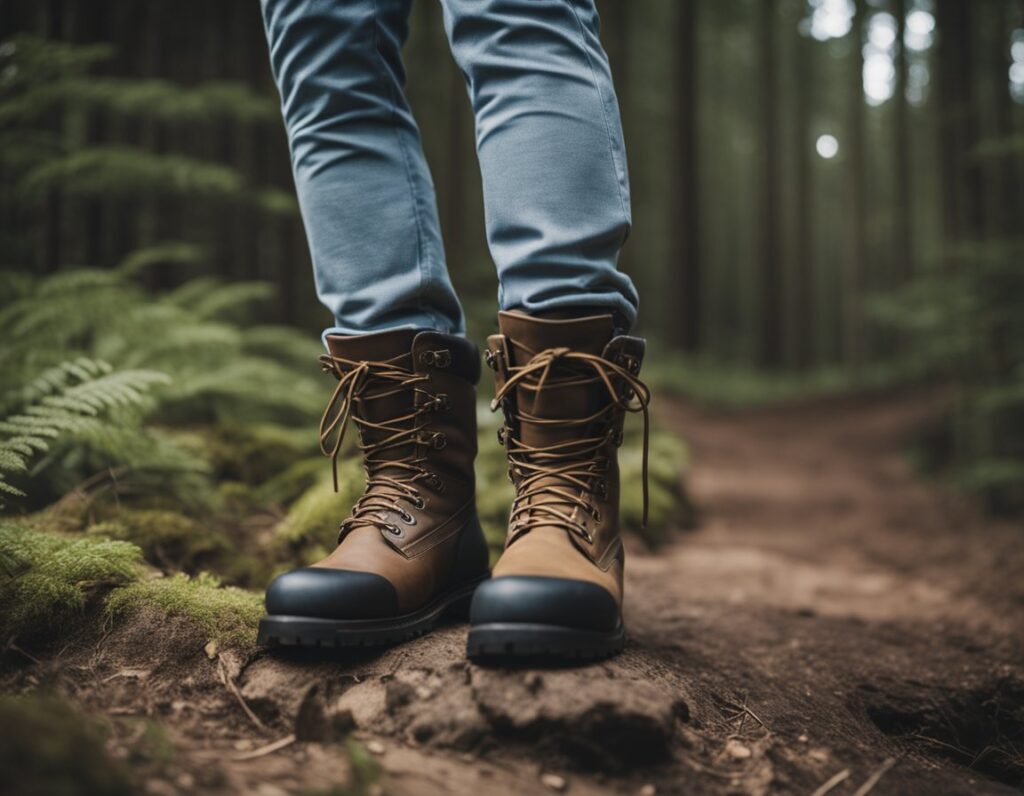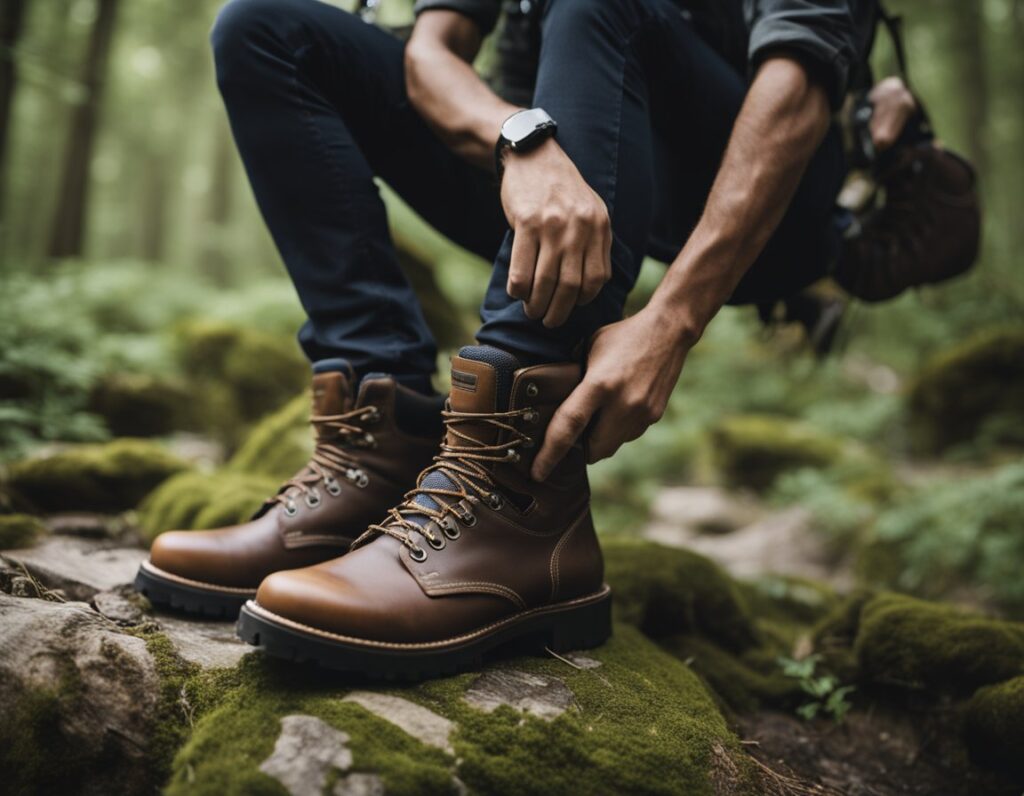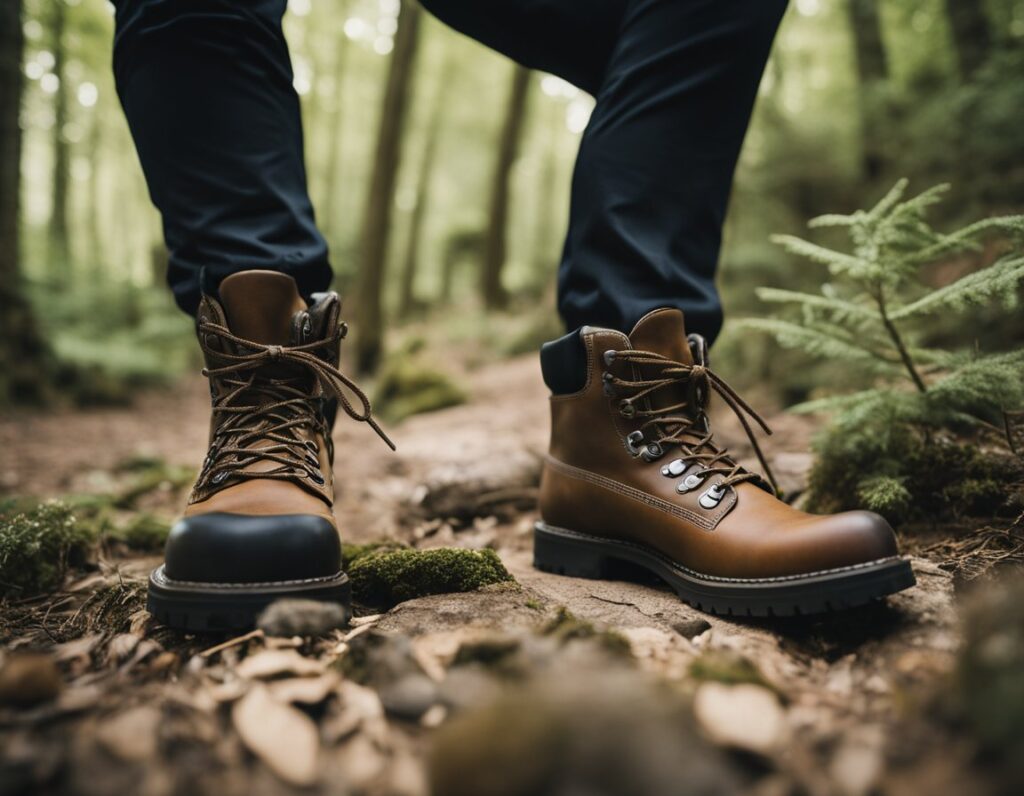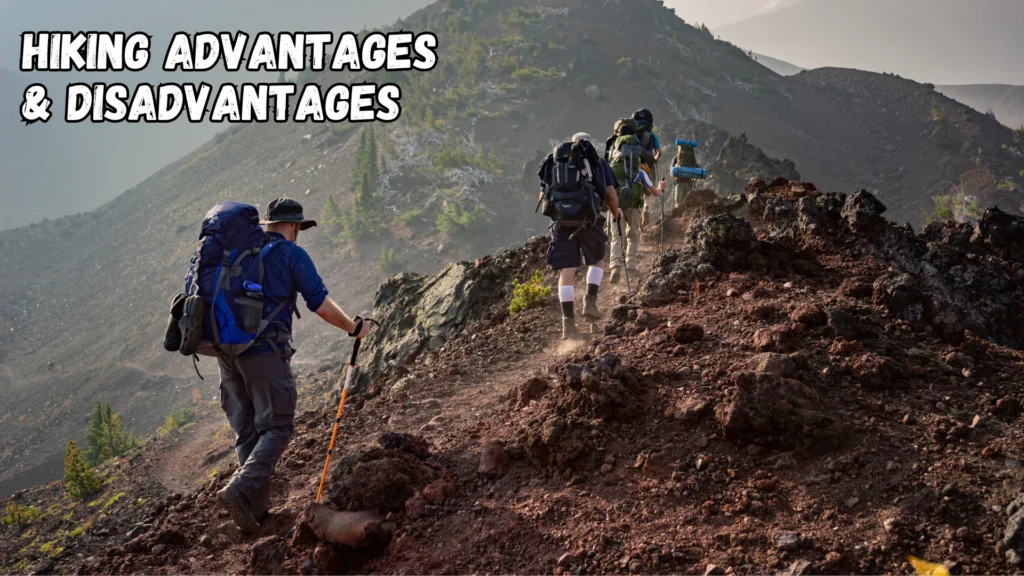Your hiking boots should neither be too big nor too small. The right fit is crucial for comfort and safety.
Are you planning a hiking trip soon? Choosing the right size boots can make or break your adventure. Comfortable boots prevent blisters and injuries. Too big, and you risk slipping. Too small, and you might get painful blisters. Finding the perfect fit is essential for a pleasant hike.
So, how can you ensure your boots fit just right? In this guide, we’ll explore tips and tricks to find the perfect size. Your feet will thank you, and your hikes will be more enjoyable. Let’s dive in and discover the secrets to choosing the best-fitting hiking boots!
Importance Of Proper Fit
When hiking, the fit of your boots is crucial. Too big or too small, and your adventure could become painful. A proper fit ensures comfort, enhances performance, and prevents injuries.
Comfort And Performance
A proper fit in hiking boots means comfort and performance. Boots that are too big can cause blisters due to friction. Boots that are too small can squeeze your feet, leading to pain.
Comfortable boots allow you to hike longer without discomfort. Properly fitting boots provide better balance. You can walk on uneven terrain with confidence. This boosts your performance during hikes.

Preventing Injuries
Proper fitting boots are essential for preventing injuries. Too big boots can cause you to trip. Loose boots can lead to twisted ankles. Tight boots restrict blood flow. This can cause numbness and pain.
A good fit reduces the risk of blisters and sores. Less friction means fewer skin problems. Correctly fitting boots support your ankles. This reduces the risk of sprains and strains.
Common Sizing Mistakes
Finding the right fit for hiking boots is crucial. Wearing the wrong size can lead to discomfort or even injuries. Many hikers make common sizing mistakes, which can be avoided with proper knowledge. Let’s explore these mistakes.
Too Big Boots
Wearing boots that are too big can cause several issues:
- Blisters: Extra space means more friction.
- Instability: Loose boots can make you trip.
- Foot Fatigue: Your feet work harder to stay stable.
Ensure that your boots fit snugly without being tight. Your heel should stay in place. Your toes need enough wiggle room.
Too Small Boots
Boots that are too small can be just as problematic:
- Toe Pain: Your toes will hit the front of the boot.
- Blisters: Tight boots can cause painful blisters.
- Numbness: Restricted blood flow can lead to numb toes.
Small boots can ruin your hiking experience. Always try boots with the socks you plan to wear. Walk around the store to test the fit.
Measuring Your Feet
Getting the right fit for your hiking boots is crucial. It ensures comfort and prevents injuries. To find the perfect size, you need to measure your feet properly. This involves checking the length, width, arch, and instep of your feet. Let’s break it down.
Length And Width
The length and width of your feet are the first things to measure. Use a ruler or a foot measuring device. Stand on a flat surface with your heel against a wall. Mark the tip of your longest toe and measure the distance from the wall. This gives you the length.
To measure the width, identify the widest part of your foot. Usually, it’s the ball of your foot. Measure this area to get the width. Having accurate length and width measurements helps in selecting the right size boots.
Arch And Instep
The arch and instep of your feet affect how your boots fit. A high arch needs more support while a low arch may require extra cushioning. To check your arch, wet your foot and step on a piece of paper. The imprint shows your arch type. A high arch leaves a thin imprint, while a low arch leaves a fuller imprint.
The instep is the top part of your foot. Measure around the highest part of your foot’s top. This helps in knowing if you need more room or support in that area. Proper arch and instep measurements ensure better comfort and fit.
Correct measurements of length, width, arch, and instep guide you in picking the right hiking boots. This prevents blisters, foot pain, and other problems during your hikes.

Trying Boots On
Finding the right fit for hiking boots is essential. You do not want them too big or too small. This section will guide you through trying on boots to get the perfect fit.
In-store Tips
When you go to a store to try on hiking boots, there are several things to keep in mind:
- Wear hiking socks: Always wear the socks you plan to hike in.
- Time of day: Try boots on in the afternoon. Your feet swell throughout the day.
- Walk around: Walk around the store. Check for any discomfort or tight spots.
- Check toe room: Ensure there is enough space for your toes. Your toes should not touch the front.
- Heel fit: Your heel should stay in place. It should not slip.
Home Testing
Once you bring your boots home, further testing is crucial:
- Wear them indoors: Wear your boots around the house. Break them in gently.
- Simulate hiking conditions: Walk up and down stairs. Mimic the movements you will do while hiking.
- Check for blisters: Look for any signs of blisters or sore spots.
- Test with gear: Wear your full hiking gear. Ensure your boots feel comfortable with everything on.
Choosing the right hiking boots is a crucial step. Follow these tips to ensure a comfortable hiking experience.
Signs Of Poor Fit
Wearing hiking boots that don’t fit well can ruin your outdoor adventure. Comfort is key. Poorly fitting boots can lead to several problems. Recognizing these signs early can save your feet from pain and injuries.
Blisters And Hot Spots
Blisters are a clear sign your boots are not fitting well. Blisters form due to constant friction between your foot and the boot. Hot spots are areas that feel warm and irritated before blisters form. These often appear on the heel, toes, and sides of the foot.
Here’s a simple table to show common areas for blisters and hot spots:
| Area | Possible Cause |
|---|---|
| Heel | Boots too large or loose |
| Toes | Boots too small or tight |
| Sides | Boots too narrow |
To prevent blisters, ensure your boots fit snugly but not too tight. Wear proper socks and break in your boots before long hikes.
Numbness And Pain
Numbness in your feet is a red flag. This can result from boots being too tight. Tight boots restrict blood flow, leading to numb feet. Pain is another crucial indicator. Pain often occurs due to pressure points or lack of support.
Below are common signs of pain and their causes:
- Sore toes: Boots too short or small
- Aching arches: Lack of proper support
- Cramped feet: Boots too narrow
If you feel numbness or pain, check your boot size and fit. Adjust the laces to distribute pressure evenly. Use insoles for additional support if needed.
Adjusting Fit
Proper fit is crucial for comfortable hiking boots. Ill-fitting boots can lead to blisters, sore feet, and an unpleasant hiking experience. Adjusting the fit of your hiking boots can make a significant difference. Here are some tips to help you get the perfect fit.
Using Insoles
Insoles can be a game-changer for achieving the right fit. They provide additional cushioning and support, filling up extra space in boots that are slightly too big. This helps to prevent your feet from sliding around.
You can find insoles with various features:
- Arch support
- Extra cushioning
- Heel stabilization
Insoles can also help those with flat feet or high arches. Custom orthotics are another option for a tailored fit.
Lacing Techniques
Lacing techniques can significantly affect how your hiking boots fit. Different techniques can secure your foot in place, reducing movement and preventing blisters.
Here are a few lacing methods:
- Heel Lock: This technique helps to keep your heel in place. It reduces heel lift and prevents blisters.
- Surgeon’s Knot: This method locks laces in place. It prevents them from loosening during your hike.
- Toe-Relief Lacing: Useful for relieving pressure on your toes, especially on downhill trails.
Experiment with different lacing methods to find the one that best suits your feet.
Seasonal Considerations
Choosing the right size for your hiking boots can be tricky. Especially when you consider the different seasons. Your feet can react differently to heat and cold. This makes it crucial to understand how seasons impact your boot size preference. Let’s break it down.
Summer Vs. Winter Hiking
In the summer, your feet tend to swell. This is due to the heat and increased activity. You might find that your usual size feels tight. Consider sizing up for summer hikes. This extra space can prevent blisters and discomfort.
Winter hiking presents a different challenge. Cold weather can make your feet contract. Thicker socks are often necessary. This means you may need a bit more room in your boots. But be careful. Too much room can lead to slipping and loss of traction.
Sock Choices
Socks play a big role in your boot fit. In the summer, you might wear thin, moisture-wicking socks. These take up less space in your boots. This could mean you need a slightly smaller size.
During winter, thicker, insulated socks are common. These add bulk to your feet. You might need to size up to accommodate these socks. But always try on your boots with the socks you plan to wear.
| Season | Foot Reaction | Recommended Boot Size |
|---|---|---|
| Summer | Feet swell | Consider sizing up |
| Winter | Feet contract | Consider extra room for thick socks |
Remember, trying boots on with the right socks is key. This ensures a comfortable and safe hiking experience.
Expert Recommendations
Choosing the right size for your hiking boots is crucial. Experts suggest that neither too big nor too small is ideal. Here, we offer expert recommendations to help you make the best decision.
Trusted Brands
Investing in hiking boots from trusted brands can make a big difference. These brands offer boots designed with comfort and durability in mind. Some top brands to consider include:
- Salomon
- Merrell
- Columbia
- KEEN
- La Sportiva
These brands use high-quality materials and have a variety of options. This ensures you find a boot that fits well and supports your feet.
Professional Fitting Services
Using professional fitting services can help you find the perfect fit. Many outdoor stores offer this service to customers. A professional fitting involves:
- Measuring your feet accurately.
- Considering the shape and width of your feet.
- Recommending the right size and model.
This personalized approach ensures that your boots are neither too big nor too small. Proper fitting helps prevent blisters and other foot issues during long hikes.
| Brand | Special Features |
|---|---|
| Salomon | Waterproof, high traction |
| Merrell | Breathable, durable |
| Columbia | Lightweight, cushioned |
| KEEN | Wide fit, arch support |
| La Sportiva | Grip, stability |
Make sure to try on boots and walk around the store. Pay attention to how they feel on different surfaces. A good fit will provide the support and comfort needed for your hiking adventures.

Choosing the right hiking boot size is crucial. Too big, and you risk blisters. Too small, and you face discomfort. Always aim for a snug fit. Your toes need wiggle room. Test boots with hiking socks. Walk around the store.
Listen to your feet. Comfort should be your guide. Happy hiking depends on happy feet. Make sure your boots fit well. Enjoy your adventures!
FAQs:
Should Hiking Boots Be Tight Or Loose?
Hiking boots should be snug but not tight. They must provide enough room for your toes to wiggle. Tight boots can cause blisters, while loose boots can lead to instability.
What Size Should Hiking Boots Be?
Hiking boots should be about half a size larger than your regular shoes. This allows for thicker socks and foot swelling during hikes. Always try boots with hiking socks.
How Much Toe Room In Hiking Boots?
There should be about a thumb’s width of space between your toes and the front of the boot. This prevents toe injuries during downhill hikes. Ensure comfort and mobility.
Is It Better To Size Up In Hiking Boots?
Yes, sizing up slightly in hiking boots is often recommended. This provides room for thick socks and swollen feet. It ensures overall comfort during extended hikes.


